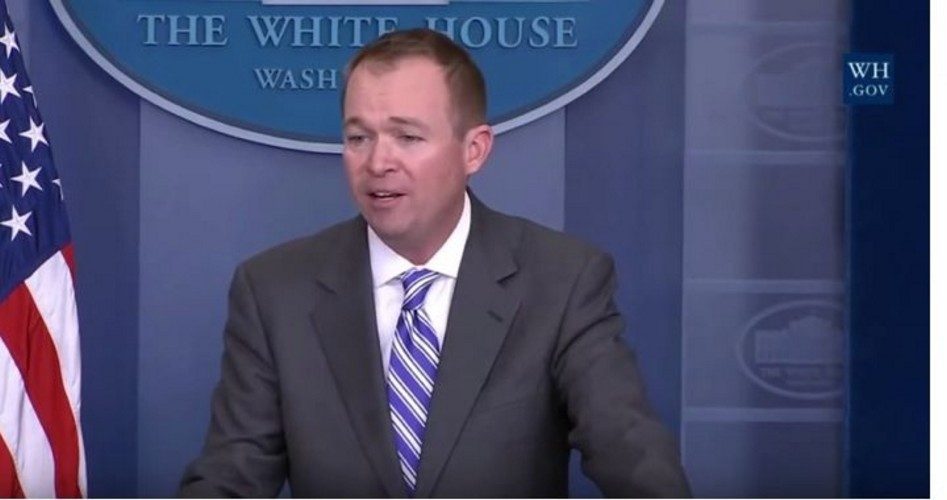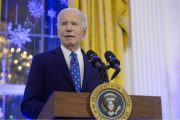
Now that the long-awaited Trump budget for Fiscal Year 2018 has been released, it hasn’t failed to deliver what skeptics initially expected: Growth coupled with lower taxes will drive the economy to levels that will balance the budget — by 2027 — much of it based on magic, hope, pixie dust, and gimmicks.
First, the “magic.” Built into the budget are what the White House calls “the effects of economic feedback,” along with Treasury Secretary Steven Mnuchin’s “dynamic scoring” that will make it work. These terms are not what economists are familiar with, but serve instead to persuade that the combination of cuts to government spending (some agencies would suffer significant cuts to their budgets), cuts in tax rates, and reductions in government regulations will result in the country’s growth-rate of its gross domestic product (GDP) climbing from roughly two percent to three percent per year by 2021. Once achieved, that three-percent annual GDP growth will continue for the foreseeable future.
Next, the “hope.” That three-percent growth in the economy is the foundation of all else that is proposed. Although never mentioned by name, it’s the Laffer Curve — the assumption that reduced taxes will result in economic growth sufficient to offset the initial reduction in federal revenues — that is hoped will work.
Economists are uniformly skeptical. The highest rate of predicted long-term GDP growth comes from the Professional Forecasters Survey at 2.1 percent. Next is that from the Economist Intelligence Unit, at 2.0 percent, followed by the Congressional Budget Office at 1.9 percent. The International Monetary Fund projects long term U.S. economic growth at just 1.6 percent. For this year the Federal Reserve predicts the economy will grow at 2.1 percent, while the Blue Chip Survey of top U.S. economists is slightly more optimistic at 2.3 percent. Another survey of leading business forecasters found that only one out of six even thinks the U.S. economy can achieve three-percent growth this year.
The Committee for a Responsible Federal Budget (CRFB), an establishment “non-partisan” Washington, D.C. outfit, predicts that real (inflation-adjusted) economic growth “will average less than 2 percent annually over the next decade,” and then explains why:
The aging population is the biggest driver for lower growth. It is responsible for three-quarters of the decline in projected labor force participation….
Even achieving sustained 3 percent growth … would be quite challenging. There is little precedent to suggest [that] labor, capital or productivity growth alone will be enough to generate 3 percent economic growth.
The “pixie dust” is next. The budget proposal assumes that workers will become more productive as a result of capital inflows from companies currently stashing cash waiting for a more favorable climate to invest. It also assumes that reluctant Democrats will join middle-of-the-road Republicans in supporting a budget which proposes slashing government spending on student loans, the SNAP food stamp program, Medicaid, and foreign aid, and tighter eligibility for welfare benefits, especially for illegals.
Finally, the “gimmicks.” One of the federal government’s favorite moves historically is to compare projected future spending by the previous administration to its present proposal. A modest reduction in that increase is then called a “cut.” In the present proposal, however, it’s even more blatant than that. Bloomberg puts the subterfuge nicely:
The budget also makes use of several other classic accounting gimmicks. It assumes that the wars in Afghanistan and the Middle East will cause future Congresses to allocate $593 billion in extra war spending that won’t be needed, and then claims to save that amount by not spending it.
Got that? Extra congressional spending on wars in the future won’t be needed (presumably because Trump will bring peace to the Middle East?), and so that is called “savings.” Only in Washington…
There is one more element not mentioned to get this proposal off the ground. The CRFB explains:
The reality is that even getting part of the way to 3 percent sustained economic growth … will likely require an aggressive and bold combination of pro-growth policies to boost productivity, labor and capital, along with a significant amount of luck.
As The New American noted back in March when the budget was first outlined, this is just the president’s opening bid. Once the sausage-making is complete, perhaps before the end of the fiscal year in September, the final budget is certain to look nothing like what is being proposed today.
An Ivy League graduate and former investment advisor, Bob is a regular contributor to The New American magazine and blogs frequently at LightFromTheRight.com, primarily on economics and politics. He can be reached at [email protected].
Photo is of Trump’s Budget Director Mick Mulvaney
Related article:
Trump’s “Blueprint” Budget Is a Policy Statement; Real Budget to Follow



